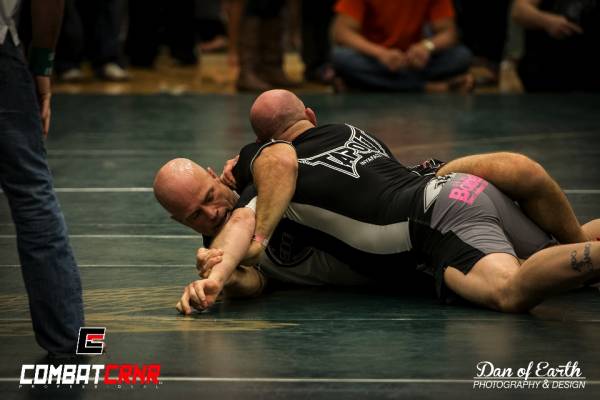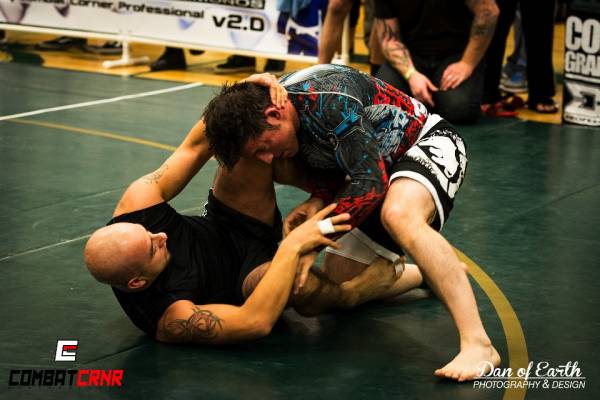Ever step on the mat after taking some time off and think to yourself, “It’s only been a week, why am I so tired?” Or thought you would be in better shape your first day back at the academy because you got to the gym a few days the previous week?
From an outsider’s perspective Brazilian jiu jitsu appears to be easy. But this thought quickly vanishes when a person rolls for the first time. At the academy where I teach, New Breed Training Center, I see new students who struggle through warm ups even though they worked out prior to beginning BJJ. I started to think and explore why this happens and how it can be prevented.
Is BJJ Aerobic or Anaerobic?
Some strength coaches feel grappling is more aerobic, while others feel it is anaerobic. The truth is it’s both. Let’s look at a five-minute grappling match to help us understand this concept better.
Five minutes is the standard match length for the white belt division and some masters divisions. It is also the shortest match length you will typically find. Have you ever tried to sprint for five minutes? It’s impossible. You can run fast for five minutes, but sprinting is a different story.
The same is true for grappling. You can only grapple at a high pace for a short time before you start to fade. Your anaerobic system is designed for short bursts of power output. These short bursts are not very efficient and result in more lactic acid being produced than the body can buffer. At some point during a match, you are going to need your anaerobic system, but for most of the time you are going to rely on your aerobic system.
The aerobic system is more efficient, designed for longer duration activities with less intensity. In a BJJ match, the majority of your time will be spent using the aerobic system. But if you are lacking in either aerobic or anaerobic conditioning, it will hurt your performance.

Why Is BJJ More Tiring Than Cardio?
I often hear students talking about the amount of cardio they are doing, yet they struggle in class. If doing cardio was enough to get you in shape, then why do some students still struggle?
First, running on the treadmill and having some big scary guy try to choke you are nothing alike. When you run or do any other type of cardio, you control the pace. Meaning, you can speed up when you want and slow down when you want. When you are rolling with someone, you are forced to react on someone else’s terms. Either you are the one setting the pace and trying to be one step ahead of your opponent or you are on the defensive constantly reacting to their movements. Either way, the pace you keep is determined by another person.
Second, when you roll you are doing cardio and weights at the same time. It does not matter how good your technique is. When you go to frame away or stand up in someone’s guard, your opponent’s body is acting as resistance. In truth, BJJ is a form of resistance training.
Third, most students are lacking in one area. People like to do what they are good at. For example, if I am really good at long-distance running, then all I am going to want to do is run long distances. When the times comes and I need to sprint, then I am going to suffer. When I do assessments on my athletes, I don’t want to know what they can do. I want to know what they cannot do.

So How Do You Get in Shape for BJJ?
For a strength and conditioning program to carryover to the mats, it needs to incorporate resistance training, aerobic conditioning, and anaerobic conditioning. What a strength-training program should not do is replace BJJ training. There is no better way to get in shape for BJJ than to roll a lot of rounds.
That being said, I understand getting in all those rounds is not always possible. Below are some suggestions to help you structure your training week:
- One Session per Week of Strength Work – Keep the weights heavy and the reps low. Do not go to failure, leave a little in the tank.
- One Session per Week of Muscular Endurance – Repetitions should be in the 6-10 range. Focus on single-limb exercises, especially for your weak areas.
- One Session per Week of Conditioning – Mix this up. Some days do sprint intervals. Other days do tempo runs. I am a big fan of sled work. Do sled drags and pulls for the specific time of a match. If your matches are five minutes, then pull the sled for five minutes.
- Daily Sessions of Mobility and Recovery – Every day you break down your body. Therefore, every day you need to help build it back up. Spend time each day on your mobility. It does not have to take long. 15-20 minutes is plenty.
The Take-Away
At first it may seem like a good idea to do hours of cardio to get in shape BJJ. But once you take a look at the requirements of the sport, it is clear that you must be in shape both aerobically and anaerobically.
Photos by Dan of Earth.






